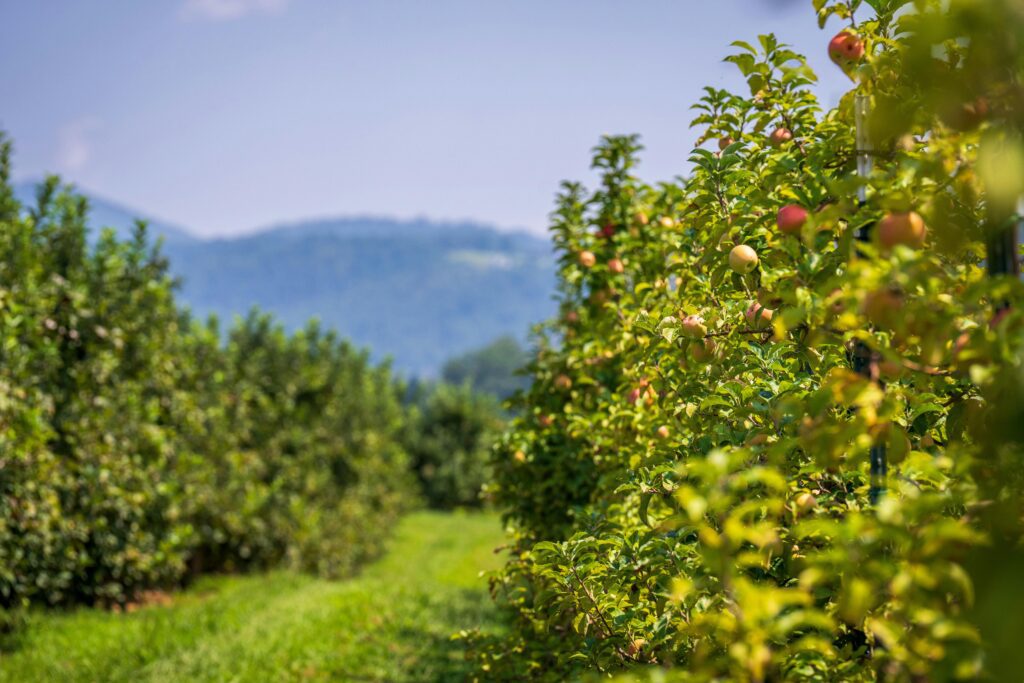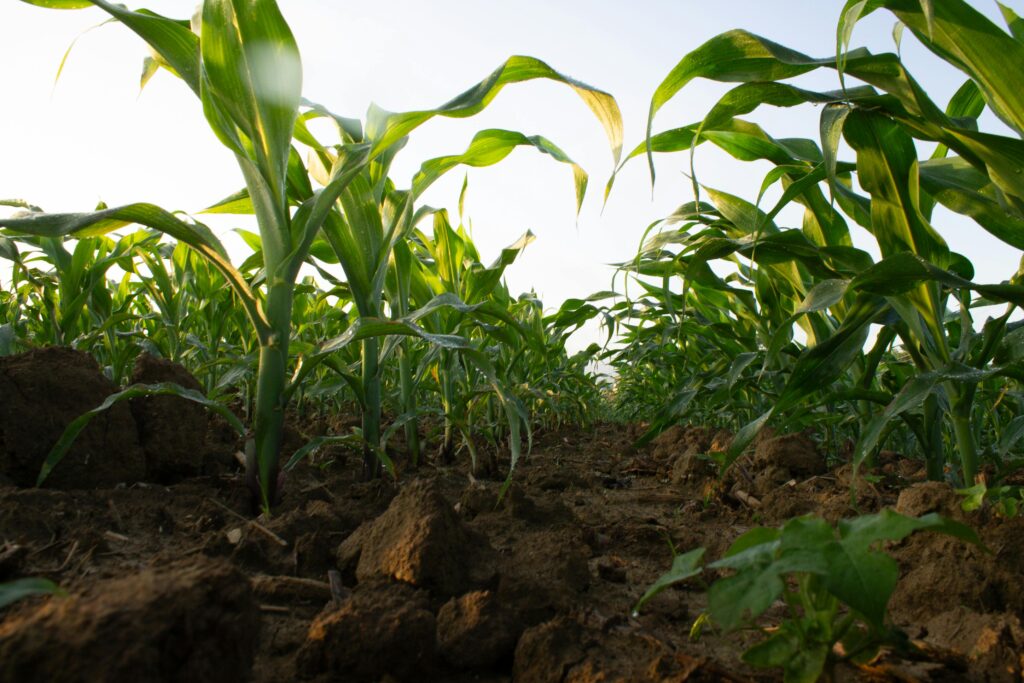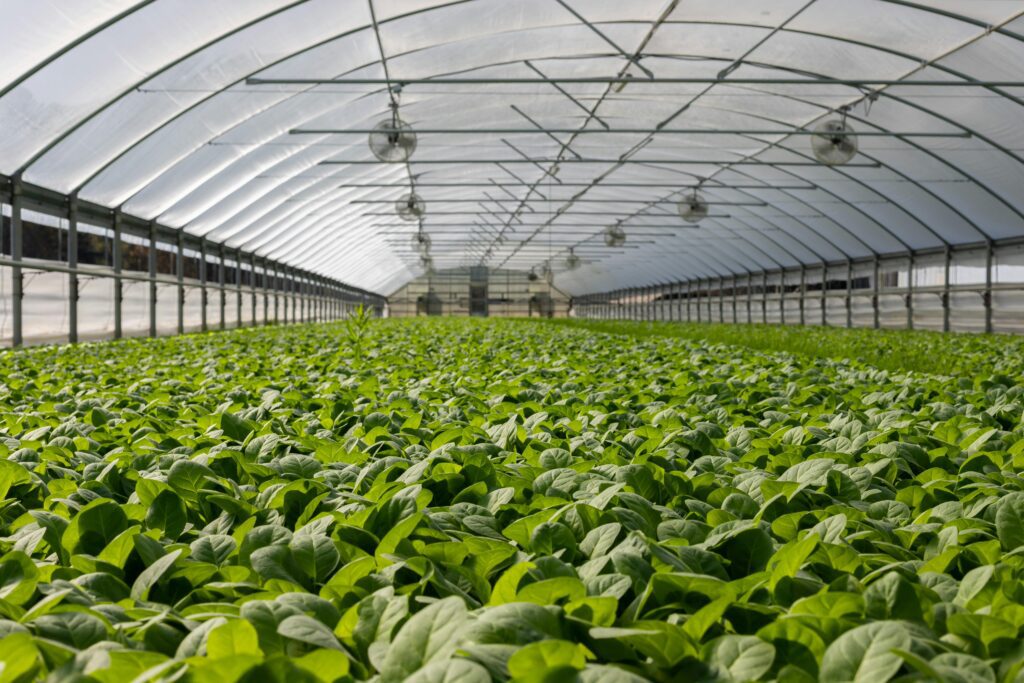Table of Contents
Introduction
Understanding Organic Farming
Organic farming is not merely a crop growing technique; it is a balanced approach that gives importance to sustainability of the environment, soil fertility, and the management of natural resources.
As opposed to conventional farming, which extensively utilizes chemical pesticides and synthetic fertilizers, organic farming emphasizes natural processes like compost, green manure, and biofertilizers.
With the implementation of these techniques, farmers not only harvest healthier and nutritious crops but also promote ecological equilibrium.
Organic farming is picking up a lot of steam in India with increasing awareness among consumers regarding the safety of food and the health benefits of chemical-free vegetables. Farmers of all sizes are seeking organic farming as a profitable and sustainable means of alternate farming.
The Indian government has also launched several incentives to boost organic farming in India, such as subsidies, training schemes, and certification programs, which assist farmers in shifting to organic farming with ease.
Why Opt for Organic Farming?
Increased demand for chemical-free fruits and vegetables, both locally and globally, has transformed organic farming into a profitable venture. Organic fruits and vegetables tend to command premium prices in the market, providing greater profitability than conventional agriculture.
Moreover, going organic enhances soil health, decreases reliance on costly agrochemicals, and encourages biodiversity, which results in a more sustainable farming environment.

Organic farming in India is not a fad but a movement towards sustainable farming. Organic farming gives the farmer back the power to control his input expenses and ensure that what he grows is of international quality and safety standards.
By correlating with government schemes and benefiting from the knowledge of the modern science of soil and crop management, even a novice can begin successful organic farms with minimal risk.
Scope of Organic Farming in India
India is among the top nations globally as far as agricultural diversity is concerned, with the same offering a great platform for organic farming.
Sikkim, Kerala, Himachal Pradesh, and Uttarakhand are among the states that have effectively adopted organic farming on a large scale, making them great models for new entrants.
As more and more organic markets, retail shops, and export outlets are opening up, the prospects for organic farming in India look bright.
Farmers, particularly small-scale farmers, would be helped by knowledge of crop rotation, natural pest control, and soil enrichment. Hybridizing traditional knowledge with contemporary organic systems guarantees greater harvests and better income stability.
Furthermore, knowledge of governmental schemes, including financial assistance and certification schemes, could relieve the burden of initial investment to a great extent, and organic farming would be an affordable and lucrative option.
Advantages of Organic Farming
Health and Nutritional Benefits
The most powerful argument supporting the use of organic farming is its better health and nutritional value. Produce that is obtained through organic farming is devoid of synthetic pesticides, chemical fertilizers, and genetically modified organisms (GMOs).
This leads to produce with more natural nutrients, vitamins, and antioxidants retained in them, making it healthier for consumers.
In India, where dietary variety is immense, organic vegetables, fruits, and cereals have the potential to enhance overall health levels.
Research has established that organic foods tend to be richer in essential nutrients like iron, magnesium, and vitamin C than conventionally grown foods.

Organic farming also minimizes the risk of chemical contamination in food, leading to long-term health issues like hormonal imbalance, allergies, and gastrointestinal problems.
For farmers, high-quality, chemical-free produce improves marketability. Consumers are more and more ready to pay a premium for organic produce, providing a lucrative niche.
By balancing the nutritional benefit with selective marketing, farmers can create a viable business model that not only brings in revenue but also supports public health and community well-being.
Environmental Sustainability
Organic farming focuses on natural inputs and methods that protect and restore the environment. Compared to conventional farming, organic farming does not ruin the fertility of soil and water sources. Organic farming uses compost, crop rotation, and biofertilizers to maintain ecological balance.
These activities improve soil structure, beneficial microorganisms, and carbon footprint reduction.
In India, where water scarcity and land degradation are increasing, organic farming provides a sustainable solution. Methods like mulching, intercropping, and vermicomposting save water, enhance the cycling of nutrients, and minimize soil erosion.
This method not only protects the environment but also provides for the sustainability of agricultural lands for generations to come.
In addition, organic farming promotes biodiversity through habitat establishment for insects, birds, and beneficial organisms. These friendly allies control pests and pollinate plants and decrease the reliance on chemical additives.
By promoting ecological balance, Indian organic farming supports a sustainable food system that rewards farmers and the earth alike.
Economic and Market Benefits
From a financial point of view, organic farming is more lucrative than the conventional approach. Although the initial investment is higher due to the requirement of organic materials and certification, the return in the long run covers the costs.
Organic products generally get higher prices in local and foreign markets, providing scope for higher income.
In functioning organic farming directly lowers the incomes of producers. Therefore, any scheme promoting organic farming would do well to increase income from the products.
Initiatives providing subsidies on organic inputs, financial support for certification, and training on sustainable farming methods are reducing the cost of doing business.
Furthermore, consumer demand for chemical-free items is continuously growing, providing an opportunity for direct marketing, online sales, and organic retail chains.
For small farmers, membership in cooperatives or farmer producer organizations (FPOs) has the potential to increase market coverage and bargaining power.
Focusing on quality, certification, and branding allows organic farmers in India to access niche markets, obtain better returns, and build a stable income that is less susceptible to market fluctuations.
Methods of Organic Farming
Soil Enrichment and Management
Healthy soil is the key to successful organic cultivation. In contrast to conventional farming dependent on chemical fertilizers, organic farming in India focuses on natural management of soil fertility. Practices like composting, vermicomposting, green manuring, and crop rotation are crucial for maintaining fertile soil.
Composting reduces organic waste such as crop residue, kitchen scraps, and animal dung to humus, which enhances soil structure, water holding capacity, and microbial population.
Vermicomposting through earthworms also speeds up the decomposition of the organic material to yield nutrient-rich castings that promote plant growth. Green manures, produced specifically to provide nutrients to the soil, are turned back into the fields, supplementing nitrogen and other nutrients naturally.
Crop rotation, which has been an age-old practice reclaimed in organic production, avoids depletion of nutrients and minimizes infestation from pests.
For instance, cropping legumes such as chickpeas or lentils alongside cereals such as wheat or maize enhances the nitrogen content naturally, minimizing reliance on synthetic fertilizers.
Through these soil management practices, farmers can ensure long-term productivity and soil health to make their organic farm economically viable as well as eco-friendly.
Pest and Disease Management
Pest and disease management in organic farming is based on natural processes and not chemical pesticides. Integrated Pest Management (IPM) is widely practiced, and it uses biological, mechanical, and cultural methods to manage pests effectively.
Biological control utilizes the natural enemies of pests like ladybugs, parasitic wasps, and nematodes to maintain pest populations. Botanical pesticides made from neem, garlic, or chili are generally used to defend crops without affecting the environment or people.
Cultural management like crop rotation, intercropping, and adequate spacing also reduce pest infestation and the spread of disease.
For example, marigold intercropping with vegetables repels destructive insects naturally, while neem sprays guard fruits from pests. These methods, when followed rigorously, not only curb crop losses but also increase the marketability of produce, as consumers pay more for chemical-free and safe produce.
By adopting natural pest control methods, organic farming in India promotes sustainable production while preserving ecological stability.
Water Management and Irrigation
Optimal water management is essential in organic cultivation, particularly in India, where most areas are water-scarce. Methods such as drip irrigation, rainwater collection, mulching, and the application of organic soil conditioners are effective in water conservation and increasing crop yields.

Drip irrigation provides water right to plant roots, which minimizes wastage and maintains uniform moisture levels. Rainwater harvesting stores seasonal rainfall for dry times, decreasing reliance on groundwater.
Mulching with straw, leaves, or crop residues suppresses evaporation, keeps soil moist, and incorporates organic matter into the soil.
Moreover, the incorporation of some organic soil amendments like biochar tends to enhance water holding capacity and soil fertility.
Through these water management practices, organic farmers are able to maximize the use of resources, keep the crops healthy, and have uniform production levels even in arid or unevenly rainfall areas.
Water conservation and irrigation practices are thus significant to the viability and sustainability of organic farming in India.
Crop Selection and Planning
Selecting the appropriate crops is crucial for organic farming beginners. Climate, soil type, market demand, and compatibility with crop rotation should be the determinants of crop selection.
High-demand crops such as organic vegetables, fruits, spices, and cereals have the potential to generate more profits when produced organically.
In India, a few such crops as turmeric, ginger, basmati rice, tomato, and bell pepper have performed well under organic farming. Crop planning also entails planning planting schedules, using intercropping, and using proper spacing to optimize sunlight and nutrient uptake.
Farmers can utilize seasonal calendars and soil health maps to plan crop cycles effectively.
Through strategic planning and proper crop selection, farmers not only increase the productivity of their farm but also minimize risks of crop loss. Along with government schemes for organic farming, crop planning enables beginners to set up a profitable and sustainable Indian organic farm.
Problems in Organic Farming
High Initial Investment and Certification Costs
One of the biggest hurdles faced by beginners in organic cultivation is the comparatively high initial cost. Shifting from conventional to organic farming usually means investing in organic inputs, compost machines, biofertilizers, and irrigation.
Also, getting an organic certification requires paid registration, papers, and regular inspections, which might be intimidating for small farmers.
Cost of certification in India varies with farm size and certifying agency. Though government programs offer partial funding, the initial investment remains substantial for most farmers.
The transition takes 2–3 years before being fully certified organic, and the yield may not command premium prices during this time. Thus, knowing these expenses and carefully planning finances is imperative.
Farmers can alleviate financial burdens by becoming members of cooperatives or farmer producer organizations (FPOs) that offer mutual support for certification and bulk purchasing of inputs.
Pest and Disease Vulnerability
Organic farming steers clear of chemical pesticides, so the crops would be vulnerable to pest infestations and disease if precautions are not taken. Although methods such as crop rotation, intercropping, and neem sprays are effective, they demand knowledge, observation, and prompt use.
Without these measures, there would be loss of crops and decreased profitability.
For instance, in India, vegetable crops such as tomatoes and brinjals are highly susceptible to infestation by pests such as whiteflies and fruit borers. Farmers must implement integrated pest management measures regularly and keep an eye on the fields from time to time.
Good training, monitoring, and anticipatory pest control are the keys to surmounting this issue. Extension services and government training programs are responsible for informing farmers about the right methods of using organic pesticides.
Limited Market Access and Awareness
Although there is increasing demand for organic produce, Indian farmers lack adequate market access. Organic sections in traditional markets are few and far between, and consumers at the local level might be poorly aware of their options.
Farmers might not be able to obtain a premium price for their produce without a suitable marketing network.

Organic product export has an added dimension of complexity, such as meeting international standards and management of logistics. Farmers need to concentrate on branding, direct selling to consumers, farmer markets, or retail chain tie-ups for better market access.
Government initiatives of organic cluster schemes, market linkages, and online marketing support can reduce these challenges. Public awareness campaigns and consumer education also increase demand and market stability for organics.
Knowledge and Technical Gap
There has to be technical know-how concerning soil fertility, crop management, pest management, and sustainable agriculture. Beginners lack this technical know-how, which creates a knowledge gap. This can result in improper method, low production, and economic losses.
In contrast to conventional farming, where chemical inputs give rapid results, organic practices need patience, planning, and learning on an ongoing basis.
In India, government extension services, NGOs, and agricultural universities provide training to fill this gap. Farmers can also gain practical skills from farmer field schools, workshops, and the internet.
The establishment of networks with experienced farmers and cooperative groups improves learning and gives them direction on how to overcome technical problems.
Challenges in Organic Farming
High Initial Investment and Certification Costs
One of the main issues with beginners in organic farming is the comparatively high initial cost. Switching over from conventional to organic farming, if not done carefully, involves buying organic inputs, composting machines, biofertilizers, and irrigation systems.
Even getting certified takes fees, paperwork, and occasional inspections that can be intimidating for small farmers.
In India, the fee for certification varies with the size of the farm and the certifying agency. Although government programs offer partial subsidies, most farmers find the startup cost large.
It takes 2–3 years before the produce is completely certified organic, and during this time, the harvest may not command premium prices. Hence, it is important to comprehend these expenses and budget finances properly.
Farmers can cut costs by becoming members of cooperatives or farmer producer organizations (FPOs) that offer collective services for certification and buying inputs in bulk.
Pest and Disease Vulnerability
Organic farming does not use synthetic pesticides, hence crops are more vulnerable to pest attacks and diseases if precautions are not taken. Although crop rotation, intercropping, and neem-based sprays are effective methods, they involve knowledge, surveillance, and prompt application.
If these are not implemented, there will be crop loss and lower profitability.
For instance, in India, vegetable crops such as tomatoes and brinjals are highly susceptible to pests such as whiteflies and fruit borers. Farmers must implement integrated pest management measures consistently and survey fields regularly.
Effective training, monitoring, and pre-emptive pest control are necessary to overcome this issue. Training programs by governments and extension services are important for training farmers in effective organic pest management.
Limited Market Access and Awareness
Despite the increasing demand for organic foods, Indian farmers face poor access to markets. Organic sections are commonly absent in conventional markets, and organic awareness among local people is even poor at times.
In the absence of effective marketing avenues, farmers might find it difficult to sell their products at a premium.
Exporting organically produced products involves additional complexities such as adherence to global standards and logistics management. Farmers need to pay attention to branding, direct consumer sales, farmer markets, or retail chain tie-ups to access premium market opportunities.
Government programs for organic cluster development, market linkages, and enabling online sales can bridge the gaps. Awareness campaigns and education of consumers further increase demand and market stability for organic produce.
Knowledge and Technical Gap
Profitable organic farming needs technical information regarding soil fertility, crop husbandry, pest management, and sustainability. Novice organic farmers mostly lack information, resulting in improper practices, yields, and economic loss.
In contrast to conventional agriculture, where chemical inputs return immediate results, organic practices need patience, proper planning, and ongoing education.

In India, government extension services, NGOs, and agricultural universities provide training courses to fill this gap. Farmers may also learn through farmer field schools, workshops, and web-based sources to gain on-farm skills.
Network contacts with experienced organic farmers and joining cooperative groups increase learning and offer advice for addressing technical hitches.
Solutions and Best Practices for Profitable Organic Farming
Leveraging Government Schemes
The government of India has launched several schemes to promote organic farming, allowing novice farmers to easily implement profitable methods.
Schemes like Paramparagat Krishi Vikas Yojana (PKVY), Mission Organic Value Chain Development (MOVCD), and National Program for Organic Production (NPOP) offer monetary support, training facilities, and certification assistance to farmers.
Under PKVY, the farmers are provided with the subsidy for practicing organic farming on small holdings, whereas MOVCD aims to build value chains for high-value organic crops, linking farmers with markets and export demand.
NPOP assures that the exportable organic produce is as per international standards, which is required for international trade. Awareness and use of these schemes not only save the initial cost but also enhance farm profitability.
Farmers are urged to submit applications for subsidies, participate in training sessions arranged by the government, and liaise with local agricultural offices in order to derive maximum benefits.
Sustainable Soil and Water Management
Soil fertility maintenance and efficient water use are the secrets of productive organic agriculture. Crop rotation, cover cropping, and regular organic manuring should be adopted by farmers to maintain soil health.
Vermicomposting and green manuring naturally replace nutrients, minimizing the use of expensive inputs.
Drip irrigation, rainwater harvesting, and mulching are strongly advised for water management. Drip irrigation is the direct delivery of water to roots, with the aim of saving water while providing crops with sufficient moisture.
Evaporation prevention and soil structure improvement come from mulching, while rainwater harvesting minimizes reliance on unpredictable monsoon patterns. These are sustainable processes that not only improve yield but also reduce the cost of inputs, thus making it more profitable.
Market Linkages and Direct Selling
Strong market linkages are critical to achieving maximum profit in organic farming. Farmers sell to consumers directly through farmer markets, organic fairs, community-supported agriculture (CSA) programs, and the internet.
This direct-consumer model tends to enable farmers to earn premium prices when they sell directly to consumers rather than selling via intermediaries.
Membership of cooperatives or Farmer Producer Organizations (FPOs) increases bargaining power, facilitates easier logistics, and increases access to bulk purchasers. Certification through government programs verifies quality, and more buyers are attracted both locally and internationally.
Branding, labeling correctly, and emphasizing the organic and chemical-free qualities of the produce are also good marketing techniques that establish credibility and boost sales.
Integrated Pest and Disease Management
To minimize losses from crops, farmers need to pursue an integrated pest and disease management approach.
Utilizing natural enemies, botanical pesticides, and cultural methods such as intercropping and crop rotation keeps the pests under check without the use of chemicals. Monitoring, timely action, and good field sanitation are necessary for minimizing risk.
For instance, growing marigolds together with vegetables drives away destructive insects, and neem oil sprays deter household pests from destroying crops. Farmers also prepare homemade organic pesticides from ingredients such as garlic, chili, and cow urine, which are effective and inexpensive.
Pairing these with government training and extension services guarantees sustainable pest control and maintains crop profitability.
Strategic Crop Planning and Diversification
Prudent crop selection and diversification are essential for risk reduction and income improvement. Beginners ought to choose highly demanded crops that are compatible with their soil, climate, and resource base.
Organic vegetables, fruits, spices, and medicinal plants tend to yield more compared to staple crops.
Crop diversification also diffuses risk, so if a crop does not perform well, others can balance out losses. Implementing intercropping, mixed cropping, and staggered planting calendars provides constant harvesting and income streams.
Through the study of market trends and consumer preferences, farmers can strategically adjust crop choice, increasing profitability and keeping soil healthy and ecosystem balance intact.
FAQs
1. What is organic farming, and why does it matter?
Organic farming is a farming technique that does not utilize artificial fertilizers, pesticides, and genetically modified seeds but rather depends on natural materials such as compost, biofertilizers, and green manure.
Organic farming is becoming increasingly significant in India as more consumers become concerned about their health and food security.
Organic farming is not only effective in producing nutritious, chemical-free produce but also ensures soil productivity, diversity, and ecological stability, which makes it a lucrative and sustainable option for farmers.
2. How do beginners initiate organic farming in India?
New farmers can initiate organic farming in India by choosing appropriate crops depending on soil type, climate, and market demand.
One needs to acquire knowledge about soil management practices like composting, vermicomposting, and crop rotation, and integrated pest management through natural means.
Utilization of government initiatives like PKVY and MOVCD will minimize expenditure and extend certification assistance, facilitating entry into organic farming and increasing profitability.
3. What are the primary advantages of organic farming?
Organic farming has many advantages, such as healthier and nutritious produce, less exposure to chemicals, richer soil fertility, and ecological sustainability. At the economic level, organic products get higher prices in the market, particularly in local and export markets.
Financial assistance, training, and market contacts provided under government schemes in India add to profit maximization, motivating additional farmers to opt for this eco-friendly method.
4. How do organic farmers control pests and diseases without using chemicals?
Organic farming is based on integrated pest management (IPM) methods instead of chemical pesticides. Methods involve the use of natural predators such as ladybugs, the use of botanical pesticides such as neem, garlic, and chili, and crop rotation and intercropping.
Such methods are widely promoted in India by training programs and government schemes, assisting farmers in controlling pests efficiently while ensuring organic purity in their produce.
5. What are the government schemes promoting organic farming in India?
The Indian government has initiated various schemes in support of organic farming, including Paramparagat Krishi Vikas Yojana (PKVY), Mission Organic Value Chain Development (MOVCD), and the National Program for Organic Production (NPOP).
These initiatives offer subsidies, training, certification assistance, and support for establishing market linkages. Farmers are able to lower costs, increase productivity, and raise profitability through the use of these schemes while maintaining organic standards.
Conclusion
Organic farming is not merely a technique of cultivation but a sustainable, lucrative, and eco-friendly mode of farming.
In India, where the country is blessed with a varied agricultural landscape and growing consumer sentiment for chemicals-free products, organic farming holds huge scope for beginners as well as seasoned farmers.
By focusing on soil health, diversity, and natural pest control, farmers can not only enhance crop quality but also ensure long-term profitability.
In spite of the drawbacks like increased initial investment, vulnerability to pests, and restrictions in market access, measures like utilization of government schemes, implementation of integrated pest management, practice of effective water and soil management, and well-planned crop planning make organic farming not only possible and viable.
Initiatives like PKVY, MOVCD, and NPOP enable financing, training, and certification support to farmers for easy shift towards organic cultivation while maintaining synchronization with international standards.
For novices, the success of an organic farm depends on education, meticulous planning, and best practices. Sustainable methods such as composting, vermicomposting, crop rotation, and intercropping build up soil fertility, conserve resources, and minimize reliance on chemical inputs.
Coupled with direct marketing systems and cooperative assistance, these methods can turn an organic farm into a profitable, prosperous endeavor.
In short, organic farming in India is a forward-looking method of agriculture that synergizes ancient age-old knowledge with new-age methods to address the increasing need for healthy, chemical-free produce.
By adopting organic methods, farmers help in conserving the environment and enhancing public health as well as open up lucrative avenues within domestic and overseas markets.
This is the moment for would-be farmers to act—begin on a small scale, strategize effectively, leverage government assistance, and progressively develop a thriving organic farm that profits their own livelihood as well as the Earth.

Organic farming uses natural methods instead of synthetic chemicals, benefiting soil health and biodiversity but producing lower yields at higher costs. While environmentally friendly, it alone may not feed the growing global population.
You’ve made a very important observation. Organic farming definitely helps improve soil health and biodiversity, but its lower yields and higher costs can be a challenge when it comes to feeding a rapidly growing population. That’s why many experts suggest combining organic methods with modern sustainable practices—like precision farming, crop diversification, and renewable energy use—so we can balance productivity with environmental care.
In this website I learn the different ways of organic farming and the the organic farming is different how the organic crops improves health and help to leave a healthy lifestyle.
I’m glad you found the content helpful! 🌱 Organic farming truly makes a difference—not just for the environment but also for our health and lifestyle. Eating organically grown crops reduces exposure to chemicals and supports a more sustainable way of living. Keep exploring and adopting these practices—it’s a step toward a healthier future!
Pingback: Modern Farming Methods: The Final Revolution for Indian Agriculture 2025 -
Exactly! Eco-friendly innovations like organic farming, IPM, and solar-powered irrigation are game-changers. They not only cut down the carbon footprint but also make farming more sustainable, profitable, and resilient for the future.
Pingback: Biodynamic Farming: 5 Powerful & Proven Ways Permaculture Farming Enhances Biodynamic Cultivation -
Absolutely! Biodynamic farming offers a unique approach that blends science and spirituality. By focusing on natural energies and the cycles of nature, it goes beyond conventional organic methods to create a balanced, holistic farming system that supports soil health, crop vitality, and sustainability.
Pingback: Polyhouse Farming: 5 Powerful Ways Agriculture Poly House & Net House Transform Agriculture -
Exactly! By reducing the use of water, synthetic fertilizers, and pesticides, organic farming under polyhouses helps protect soil and water resources. This method not only promotes sustainability but also improves crop quality and supports year-round cultivation efficiently.
Pingback: Bio Fertilizer Power: 5 Proven Biological Fertilizer & Biotechnology Fertilizer Benefits -
Exactly! Beneficial microorganisms play a crucial role in enriching soil by fixing nitrogen, solubilizing phosphorus, and releasing potassium. This natural activity enhances nutrient availability, promoting healthier crops and more sustainable farming practices.